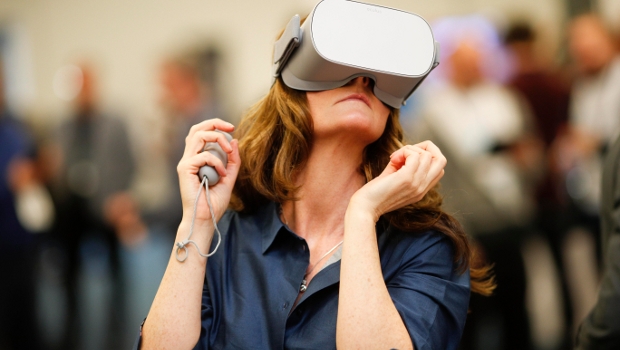 If this year’s ARVR Innovate had a tag line it would have been along the lines of ‘waiting for the other shoe to drop’. This isn’t a bad thing, merely an acknowledgement that we’re still lacking a killer app to bring the technology into the mainstream.
If this year’s ARVR Innovate had a tag line it would have been along the lines of ‘waiting for the other shoe to drop’. This isn’t a bad thing, merely an acknowledgement that we’re still lacking a killer app to bring the technology into the mainstream.
At the conceptual level blended reality remains an exciting prospect. When it comes to AR the stats are encouraging, 1.4 billion compatible devices and 600 million downloads of Niantic’s Pokemon Go are strong indicators of success. However, these positives are offset by scant availability and uptake of AR apps and Niantic’s well-documented problems with server load and the resulting challenges in fostering a long-term gaming community. A case of too much and not enough success.
At least in industry progress is more steady, where Audi’s marketing exercise in showcasing its leading edge technologies via Hololens sat within feet of Daqri’s latest generation of smart glasses (the helmet form factor already a thing of the past) with their ‘factory floor’ appeal.
As for VR progress was more muted. Irish success stories Big Motive and Warducks touted their international successes. VRAI’s IED simulator for UN staff in Somalia was a harrowing experience I’ll not forget and Pink Kong’s beautiful short film Aurora showed how to keep an audience interested in a linear narrative taking place in a sandbox environment. The fields of animation, film making, UX design and gaming never felt so closely intertwined. What a time to be a storyteller.
And yet more than one company I spoke to on the expo floor conceded that the industry was in something of a holding pattern. Hence that other shoe waiting to drop. In this case, it’s the Oculus Go.
For the past few years VR has come in two distinct flavours: ultra and light. The former – like the HTC Vive and Oculus Rift – require big rigs and big budgets to get the best from. The latter is the gateway drug – usually a generic headset powered by a smartphone – whose appeal is in simpler experiences with fewer interactive elements and a user experience dictated by the quality of your handset.
Whither the middle ground? The device that’s comfortable to use, isn’t prohibitively expensive and, most importantly, isn’t dependent on someone else’s tech? The Oculus Go at least tries to check all those boxes at once.
What’s worth keeping track of are the same flaws that beset all mobile devices: market penetration, developer interest and the pace of iteration. Personally, I’ll be waiting for the second generation model before parting with my €400. Call it the ‘iPhone effect’ but I’ve found that it’s best to throw in with every other edition of a device, allowing time for kinks to be ironed out and the market to mature. That said, I will be buying one. As an iPhone user I’m weary of Apple’s foot-dragging on blended reality. If the Go is the only way to avoid shelling out for a high-end Android handset and and an alright-not-fantastic headset to house it in then I don’t have much choice.
On the other hand, there is the Pico Bobbin, which comes preloaded with apps and games, but I don’t know anyone travelling to the Far East in the next while to bring one back. Ho hum.







Subscribers 0
Fans 0
Followers 0
Followers